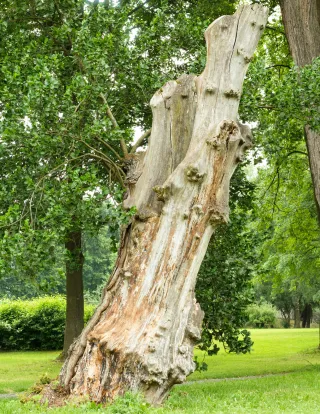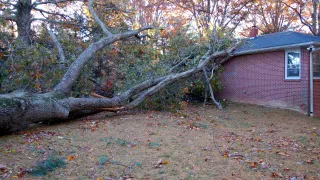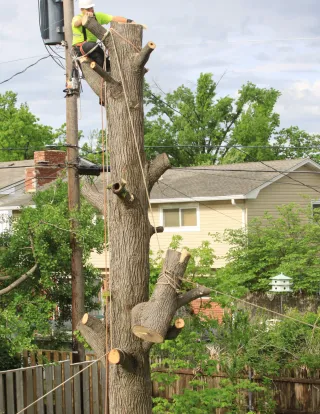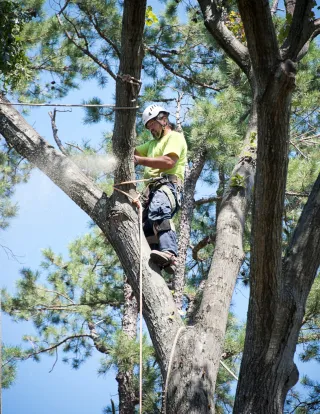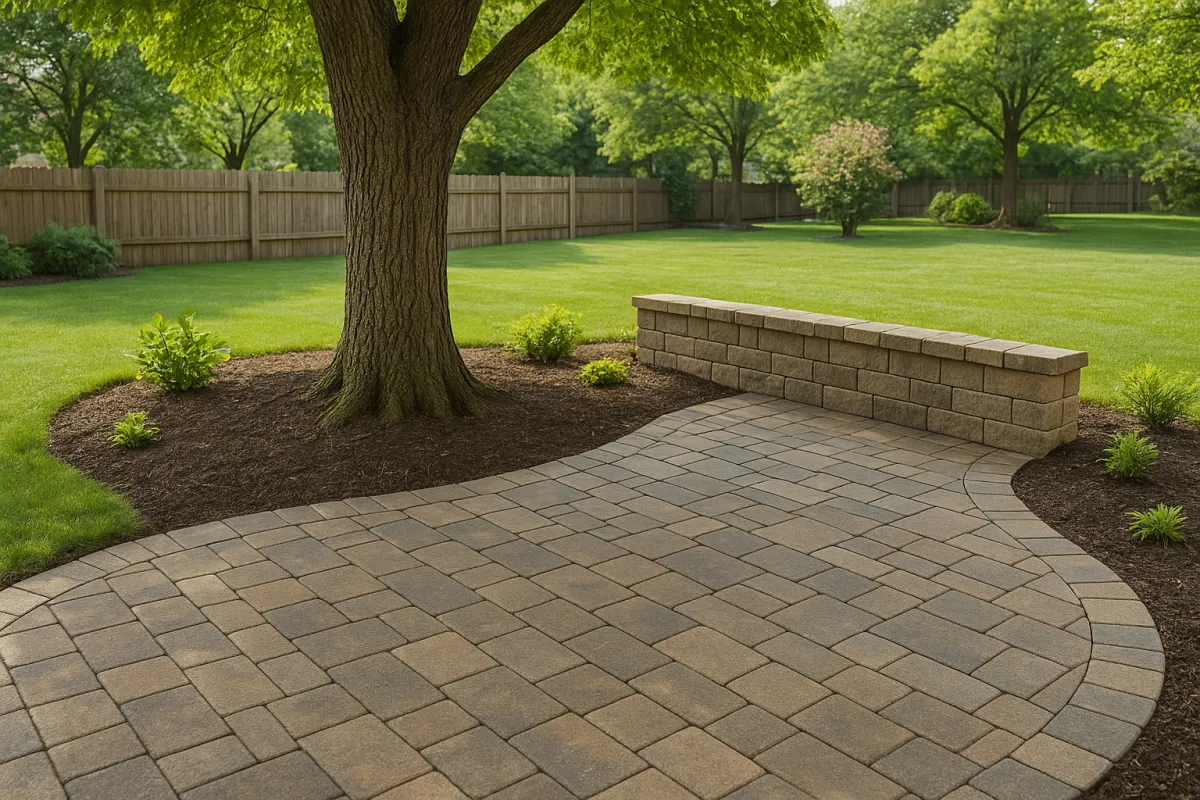
Tree-Friendly Hardscapes: Enhancing Your Yard Without Damaging Roots
Adding a new patio, walkway, or retaining wall can be a great way to improve your yard — especially as summer sets in and outdoor living becomes the focus. But when you have mature trees nearby, even a well-intentioned upgrade can cause unexpected harm if you’re not careful with the root system.
At Out On A Limb For You, we’ve seen it happen too often: a tree looks perfectly healthy in May, but by late summer, the leaves start to brown… or an entire side starts to die back. The cause? Unseen root damage during a hardscape project.
The good news? You don’t have to choose between beautiful landscaping and healthy trees. With a little planning — and the right materials and methods — you can do both.
Why Tree Roots Matter More Than You Think
Tree roots don’t just anchor the tree — they’re its lifeline. Most of the roots that take in water and nutrients are found in the top 12–18 inches of soil and can extend two to three times beyond the canopy's edge.
That means even if you’re not digging near the trunk, you could still be impacting the root system.
When roots are cut, compacted, or suffocated by heavy materials, the tree may not show immediate symptoms. But over time, those injuries can lead to:
Stress-related dieback
Vulnerability to pests or disease
Instability during storms
So how do you protect them while still getting the outdoor space you want?
1. Plan Around the Critical Root Zone
Before you install anything, it’s important to identify what arborists call the Critical Root Zone (CRZ) — the area around a tree that should be protected during construction.
As a rule of thumb:
📏 Measure the diameter of the trunk (in inches) at chest height, and multiply by 12. That’s the radius (in feet) of the root zone you’ll want to treat with extra care.
If your new hardscape can avoid that zone altogether — great! If not, there are ways to minimize the impact.
2. Use Permeable, Root-Friendly Materials
Traditional concrete and pavers can block airflow and trap moisture — both of which stress tree roots. Consider using more tree-friendly materials like:
Permeable pavers that allow water and air to pass through
Gravel, decomposed granite, or mulch for informal paths
Wood decking built on piers that can span over root systems
Stone slabs set on sand or gravel instead of concrete
These options create stability and style without suffocating the ground beneath.
3. Don’t Excavate More Than You Need To
When digging near trees:
Avoid trenching across large root systems
Hand-dig or use air excavation (an air spade) when working in sensitive areas
Cut as few roots as possible, and never remove roots larger than 2 inches in diameter without consulting a professional
The less disturbance, the better. Roots don’t regenerate quickly — and large cuts can become entry points for disease or decay.
4. Consider Raised or Floating Designs
If your dream patio or retaining wall falls within a tree’s root zone, you may not need to cancel the project — just elevate it.
Raised hardscapes can be built above the root system using:
Deck piers or footings placed strategically between major roots
Freestanding retaining walls that don’t require deep digging
Bridged walkways that allow natural ground movement and airflow
It’s a win-win: you get the structure you want, and your tree keeps the space it needs to thrive.
5. Give the Roots Some TLC After the Build
Even when you’re careful, construction can still be a little stressful on trees. After your project is finished, help your trees bounce back with:
A fresh layer of mulch (pulled a few inches back from the trunk)
Consistent deep watering — especially during hot, dry weeks
A check-in with an arborist if you notice any signs of stress by mid to late summer
A little post-construction care goes a long way in keeping your trees strong and resilient.
Final Thoughts
Adding hardscapes to your property doesn’t have to come at the expense of your trees. With thoughtful planning and a little extra care, you can create a yard that’s both beautiful and biologically balanced.
📞 If you’re not sure how your plans might impact your trees — or if you’ve already noticed signs of stress — call or text us at (423) 443-4533. We’re happy to walk your yard with you and offer practical, grounded advice.


